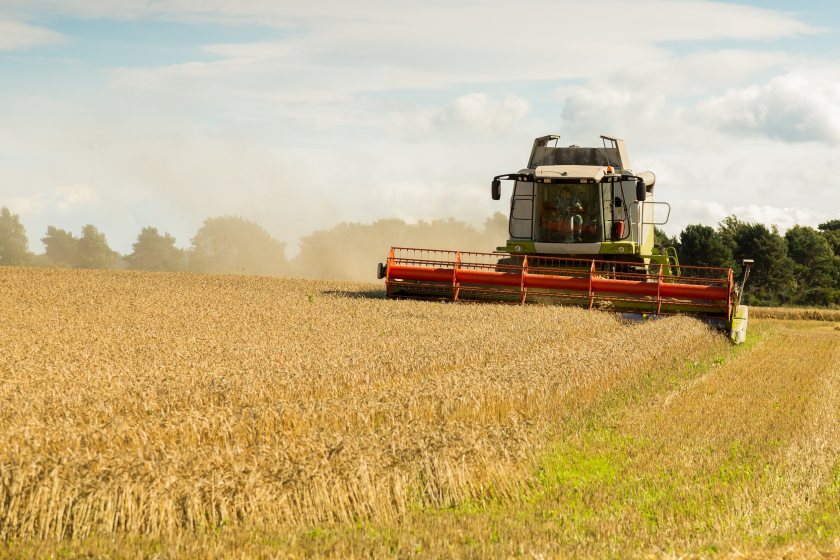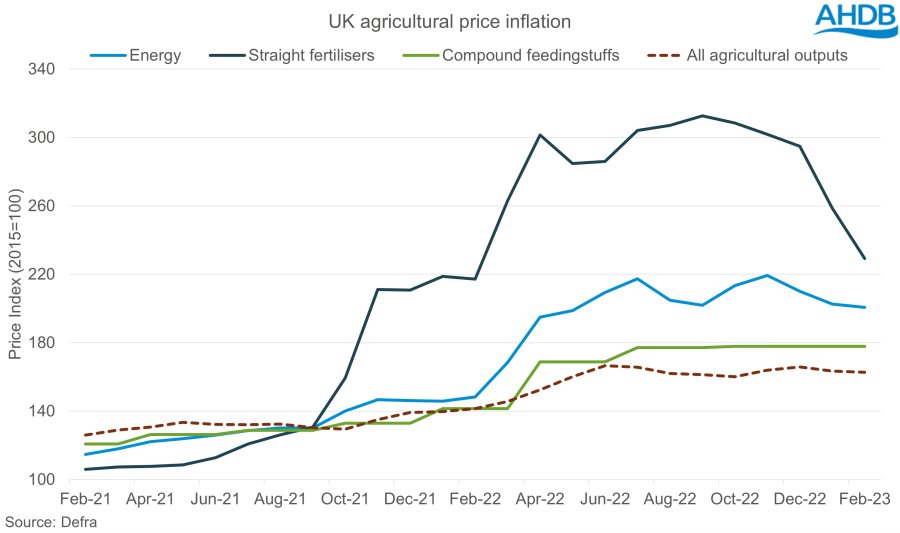
The rate of agricultural inflation has eased since peaking in the autumn, but pressure on farmers' margins still remains as price inflation sits at historically high levels.
The latest Agricultural Price Index (API), which reflects the change in the price farmers have paid for goods and services in relation to the base year of 2015, shows that the rate of inflation has slowed.
Although this will be welcome news to farmers, pressure on margins still remains as price inflation continues to sit at records highs, with key inputs maintaining a higher rate of inflation than outputs.
Freya Shuttleworth, senior analyst at the AHDB, said the extent to which inflationary pressure would impact individual farms would depend on their contracts and purchase requirements.
Fertiliser price inflation has seen the largest decline, falling 22% in the first 2 months of the year and down 27% compared to the inflationary peak in September.
Despite this, price inflation is up 6% on February last year and sits at a substantial 116% above the level from 2 years ago.
Ms Shuttleworth said: "We anticipate fertiliser price inflation to continue to ease in the short term as it follows the downwards movements seen in the natural gas market."

In March average spot prices for UK produced ammonium nitrate declined by £166/t compared to the previous month, sitting below £500/t for the first time since summer 2021.
Energy price inflation has eased but at a much slower rate, down 4% from the start of the year and a 9% drop compared to November where inflation peaked as winter energy demand picked up.
However, year on year there has been a 35 percent increase in energy price inflation.
Ms Shuttleworth added: "We would expect to see inflation to continue to ease as we leave the winter demand period, however with a cooler and wetter spring this year it is likely that energy demand has remained higher for longer.
"There is some government support with energy prices available to businesses with the Energy Bills Discount Scheme running until 31 March next year.
"A higher level of discount is available to those who qualify as part of the Energy and Trade Intensive Industries (this includes dairy, meat, and fish processors)."
Inflation for compound feeds has remained flat since peaking in the summer but sits 26% above the level from this time last year and is 47% higher than in 2021.
Wheat futures markets are currently at a similar price point to February last year, before the Russian invasion of Ukraine.
Ms Shuttleworth explained: "While short term volatility in grain markets is likely with the Black Sea Initiative nearing renewal, longer term fundamentals point to a less pressured price outlook, with ample global grain supply expected for next season."
